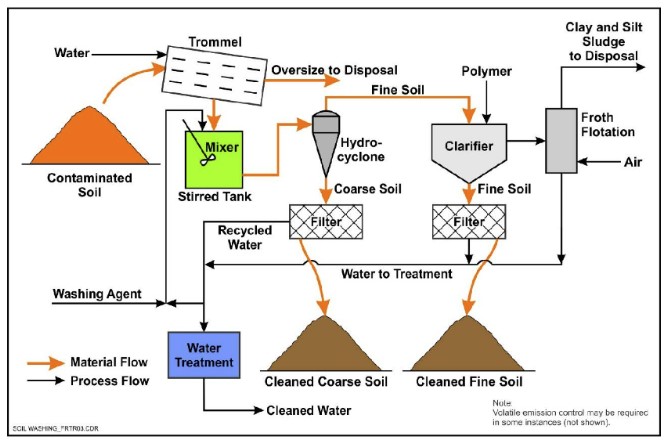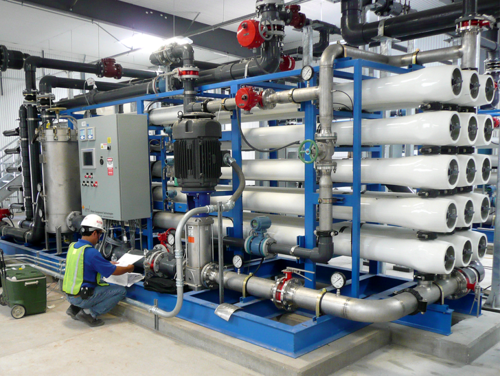The Complete Guide to Effective PFAS Treatment for Soil Contamination
Your Guide to PFAS Treatment Technologies and Advantages
The prevalence of PFAS contamination in water sources requires an extensive understanding of readily available therapy modern technologies. Each innovation not just targets particular PFAS compounds but also plays a crucial role in improving total water top quality and shielding ecological honesty.
Recognizing PFAS Contamination
Understanding PFAS contamination is crucial for resolving its prevalent effect on ecological and human health and wellness (m270 pfas treatment). Per- and polyfluoroalkyl materials (PFAS) are a group of synthetic chemicals commonly used in different commercial and customer products because of their water- and grease-resistant properties. Generally discovered in firefighting foams, non-stick cooking equipment, and water-repellent fabrics, PFAS have actually gone into the atmosphere through manufacturing processes, wastewater discharges, and leaching from land fills
As soon as released, these compounds persist in the setting, leading to extensive contamination of soil and water resources. Their one-of-a-kind chemical framework, defined by strong carbon-fluorine bonds, makes them resistant to degradation, resulting in a sensation understood as "permanently chemicals." PFAS can collect in the human body and the food chain, possibly creating adverse wellness results, including immune system disturbance, developing problems, and a boosted threat of particular cancers cells.
Regulative firms and health companies are increasingly identifying the relevance of PFAS contamination, triggering efforts to keep an eye on, assess, and mitigate its results. Comprehending the pathways of PFAS contamination is essential for informing public law and establishing effective methods to secure both ecological and human health.
Summary of Treatment Technologies
Different therapy technologies have actually been established to attend to the difficulties positioned by PFAS contamination in water and dirt. These innovations can be broadly identified right into numerous categories, each with its special mechanisms and performance in eliminating PFAS compounds.
One prominent strategy is ion exchange, which utilizes material products to catch and remove PFAS from infected water. This approach is particularly efficient for short-chain PFAS and can achieve significant decreases in concentration levels. Another innovation, progressed oxidation procedures (AOPs), uses solid oxidants and ultraviolet light to damage down PFAS into less damaging materials. AOPs appropriate for treating a variety of PFAS compounds however might need mindful optimization to make best use of efficiency.

Turned On Carbon Filtering
Activated carbon filtering is a widely used method for the removal of PFAS from polluted water, recognized for its capacity to adsorb a wide array of organic compounds. This modern technology uses activated carbon, a highly porous material with a substantial surface location, which helps with the binding of PFAS particles through physical adsorption. The efficiency of turned on carbon in removing PFAS is influenced by a number of factors, including the kind of carbon utilized, the contact time, and the concentration of PFAS in the water.
One of the advantages of activated carbon filtration is its adaptability; it can be executed in numerous setups, such as granular turned on carbon (GAC) systems or powdered turned on carbon (PAC) systems. GAC systems are generally used in larger-scale applications, while special-interest group can be made use of in smaller or short-term configurations. Furthermore, the technology is relatively very easy to operate and keep, making it accessible for many water treatment centers.

Ion Exchange Systems
Ion exchange systems stand for an additional reliable technique for the elimination of PFAS from contaminated water, matching approaches like turned on carbon filtering. These Read More Here systems operate on the principle of trading ions in the water with ions held on a resin product. Ion exchange resins can be especially created to target the adversely billed PFAS compounds, properly catching them and allowing cleaner water to travel through.
Among the main benefits of ion exchange systems is their ability to remove a large range of PFAS, including both long-chain and short-chain versions. This site link convenience makes them suitable for various applications, ranging from municipal water therapy to industrial processes. In addition, ion exchange systems can frequently accomplish reduced detection restrictions for PFAS compared to a few other treatment techniques, therefore enhancing water top quality.
Nevertheless, it is vital to keep an eye on and handle the regeneration of ion exchange media, as the performance can decrease over time due to saturation. Proper upkeep and replacement of the material are crucial for sustaining the system's performance. Overall, ion exchange systems supply a trusted and effective service for PFAS removal, contributing dramatically to safe alcohol consumption water criteria and environmental management.
Advanced Oxidation Processes
Advanced Oxidation Processes (AOPs) use effective oxidants to successfully break down PFAS compounds in infected water. These cutting-edge therapy techniques create extremely reactive types, such as hydroxyl radicals, that can damage down complex PFAS particles right into less dangerous by-products. m270 pfas treatment. AOPs generally employ mixes of ultraviolet (UV) light, ozone, hydrogen peroxide, or Fenton's reagent, enhancing the oxidation capacity and improving deterioration effectiveness
The key advantage of AOPs hinges on their capacity to target a wide series of PFAS compounds, consisting of both long-chain and short-chain versions. This versatility is necessary, as PFAS contamination typically includes mixtures of different compounds with differing chemical structures. AOPs can be incorporated into existing water treatment systems, making them a functional option for lots of towns and industries.
Nonetheless, the implementation of AOPs can be resource-intensive, calling for mindful consideration of operational costs and energy consumption. In addition, while AOPs work in breaking down PFAS, they might not entirely remove all by-products, requiring further treatment steps - m270 pfas treatment. Generally, AOPs stand for an appealing avenue for dealing with PFAS contamination, adding to cleaner water sources and enhanced public wellness defense

Verdict
In final thought, attending to PFAS contamination calls for an extensive understanding of available therapy technologies. Activated carbon filtering, ion exchange systems, and progressed oxidation procedures my explanation each present one-of-a-kind advantages for successfully removing these damaging substances from water resources. By choosing the proper innovation, neighborhoods can enhance water high quality, shield public health, and minimize the environmental threats connected with PFAS direct exposure. Proceeded study and implementation of these techniques are vital for efficient administration of PFAS contamination in influenced locations.